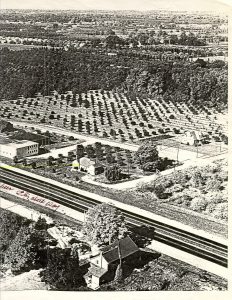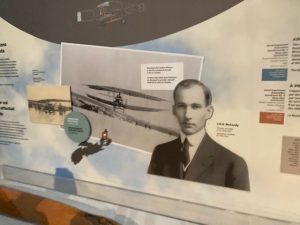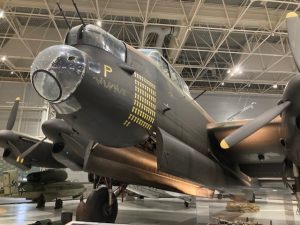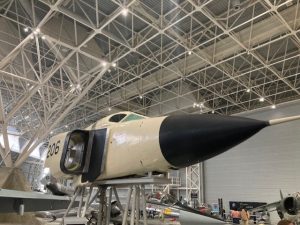As with previous articles on this theme, whenever I travel, I invariably find myself drawn to making connections back to Mississauga. We recently took a few days to get away and visit Ottawa, which is a place that our family always loves to explore.
Our first “connect” to Mississauga came along the route there. Passing along Highway 401 near the “Big Apple” outside of Bowmanville (if you know that place, it is well worth the stop!).
Anyway, we passed the road sign announcing Watson’s Farms, one of the preeminent pick your own apple and produce farms in Ontario (and also well worth a visit). But Watson’s Farms in Bowmanville has a Mississauga connection. The Watson family arrived in the Lakeview/Port Credit area in 1872. The family nurtured a large orchard that contained a great variety of apple and fruit trees. The farm came to be known as the “Silver Birch Fruit Farm”.

John and Elizabeth Watson had seven sons: William George, Charles, Fred, Jessie, Harvey, John and Wesley. The Watson family attended Bethesda United Church in Dixie and were quite involved in the community. When John passed away in 1903, his son William George Watson took over his father’s affairs and managed the family farm. Jane and William George Watson had five children: William Richard, Charles, George, Fred, and Ida May.
In 1909, William Richard Watson took over operation of the farm from his father. The Silver Birch Farm remained in the Watson family until 1951, when it was sold and became part of the Orchard Heights, Rometown and Applewood Acres subdivisions. Several Watson family homes still survive in the area, and two streets commemorate the Watson family: “Watson Orchard Road” and “Glen Watson Drive.” The Watson’s orchards gradually disappeared with the development of subdivisions and the widening of the QEW. As for Watson’s Farms near Bowmanville, it began in the early 1970s under the direction of Ted Watson, who was born on the family farm here in Mississauga.
Our next Mississauga connection came once we arrived in Ottawa and attended an Ottawa Senators hockey game. The Senators faced off against the Nashville Predators, and despite cheering for the hometown team, we watched NHL rookie and Mississauga native Philip Tomasino and his Predators squeak by the Sens. It’s hard not to cheer against a hometown boy, and we will certainly follow his career as I am sure he will make Mississauga proud.
Over the next two days we had a chance to visit several Ottawa-area museums, including the Canada Agriculture and Food Museum as well as the Canada Science and Technology Museum. However, it was a visit to the Canadian Aviation and Space Museum that highlighted even more Mississauga connections.
In the collection of the Aviation and Space Museum is a re-creation of J.A.D. McCurdy’s famed “Silver Dart”, the first powered, heavier-than-air machine to fly in Canada at Baddeck, Nova Scotia in 1909. You will find Silver Dart Drive as a road name in Mississauga, near the airport. But the bigger connection is to McCurdy himself.
In 1915 Curtiss Aeroplanes and Motors Limited opened an aviation school known as the Long Branch Aerodrome under the direction of J.A.D. McCurdy to train candidates for the Royal Naval Air Service and the Royal Flying Corps during the First World War. The aerodrome, despite its formal name, was in the Lakeview area of Mississauga – the first of its kind in Canada.

The next local connection came with the Lancaster Bomber in the museum’s collection. KB944 rolled off the assembly line at Victory Aircraft in Malton in March of 1945, and was flown to England in May of 1945. KB944 arrived too late to take part in the war effort and returned to Canada in June of 1945. KB944, known as “Winnie”, later served with No. 404 Maritime Patrol Squadron RCAF in Greenwood, Nova Scotia in 1952, before being placed in long-term storage and eventually was transferred to the museum. “Winnie” is the most complete Lancaster bomber remaining today.

The museum also featured a fascinating video on the British Commonwealth Air Training Plan, which was a massive, joint military aircrew training program created by the United Kingdom, Canada, Australia and New Zealand during the Second World War. “The Plan” remains one of the single largest aviation training programs ever created and was responsible for training nearly half of the pilots, navigators, bomb aimers, air gunners, wireless operators and flight engineers who served with commonwealth forces during the Second World War. Malton was home to the No. 1 Elementary Flying Training School as part of the British Commonwealth Air Training Plan.
Also in the Museum’s collection is a CF-100 “Avro Canuck”, similar to the CF-100 which is on the pedestal in Paul Coffey Park in Malton today.

The Museum’s “Canuck” is #757 and was built in Malton in early 1958 and delivered to the RCAF in August of 1958. It served initially out of North Bay, Ontario, and after 1959 from Bagotville, Quebec. 757 was retired in 1979 and transferred to the Museum after a 21-year career.
Another significant Mississauga connection is with the famed CF-105 “Avro Arrow”.

The Museum houses the largest surviving piece of an Avro Arrow: the nose section of RL-206. Other Avro Arrow components in the Museum’s collection include an Orenda Iroquois engine, a Pratt & Whitney J75 engine that was used for test flights, and other parts. All of which, of course, were designed and built right here in what is now Mississauga.
Closing this chapter of Finding Mississauga is perhaps the most random link. On our last day in Ottawa, my wife and daughter had a chance to take a short sight-seeing flight over parliament hill. Aboard a small Cessna, their pilot from Ottawa Aviation Adventures skillfully guided them over the skies of Ottawa. The pilot, Callum, was born and raised in Mississauga. Small world, and you never know where you might find Mississauga away from home.



Comments are closed.